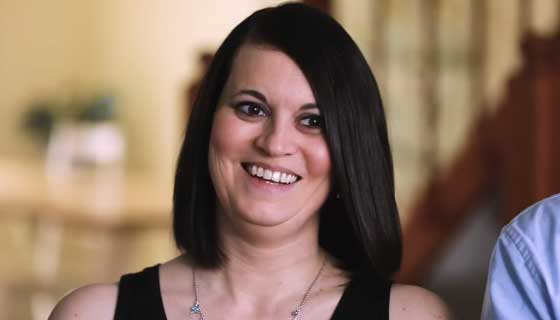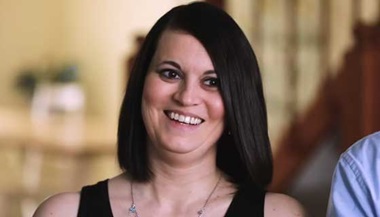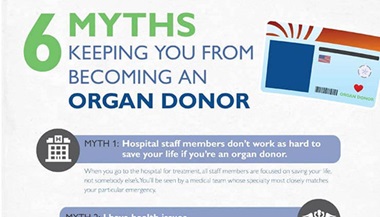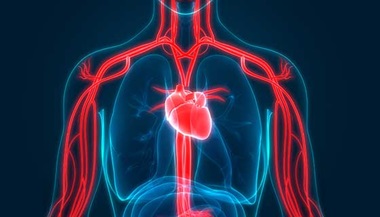Behind Hand and Arm Transplants
Featured Experts:
Hand transplantation is a procedure to surgically attach a donor’s hand or arm to a recipient, and can be life changing for those who have suffered an amputation or experienced extreme loss of hand function due to illness or injury. It is a complex procedure that involves a rigorous screening process, detailed surgical preparation, up to 12 hours or more of surgery, nerve regeneration, physical therapy and immunosuppressive medications taken for the rest of the patient’s life.
To learn more about the behind-the-scenes considerations that go into a successful hand transplant, we spoke with plastic and reconstructive surgeon Dr. Jaimie Shores, clinical director of the Hand and Upper Extremity Transplantation Program at Johns Hopkins Comprehensive Transplant Center, and transplant surgeon Dr. Gerald Brandacher, Scientific Director of the Reconstructive Transplantation Program and Director of the Vascularized Composite Allotransplantation (VCA) Laboratory at Johns Hopkins.
What is the evaluation and screening process for a potential hand transplantation candidate?
Dr. Jaimie Shores: We try to evaluate which option, be it transplantation, or a more conventional reconstructive option including traditional reconstructive surgery, prosthetics, or more advanced prosthetics combined with targeted muscle reinnervation, will ultimately provide the patient with the best outcome. Part of this process includes determining if there is enough muscle and healthy nerve to realistically expect nerve regeneration that will provide them with adequate motor function after the surgery. Once the patient is evaluated, we also screen them to ensure they have the ability to keep up with the medication and physical therapy demands, the perseverance to continue with the process in the event of short-term setbacks, and a proper support system around them to help them be successful. Once screening has been completed, we will have evaluated the patient anatomically/surgically, medically, immunologically, psychologically, and socially. Each of these categories is extremely important.
Dr. Gerald Brandacher: Each candidate also undergoes immunological screening, which includes blood type and HLA typing, the test to confirm that the donor and recipient tissues match. These are unique markers that we want to match as close as possible between donor and recipients. There are a few virus parameters that need to be matched as well. We want to restrict the type of transplants to immunologically low-risk patients, typically those who have no donor-specific antibodies, other organ transplants or have been pregnant. We do this because we know that high risk patients have high rejection rates and require a more intense immunosuppressant regimen. This isn’t a lifesaving type of transplant so minimizing all the side effects and toxicities of long-term immunosuppression is key. Our team is working on a unique immunosuppression protocol that includes treating the patient with antibodies on the day of transplant, followed by a donor bone marrow infusion several days later.
How do surgeons connect the donor hand to the recipient?
Shores: Hand transplant surgery is complex and involves bone fixation, reattachment of arteries and veins and repair of tendons and nerves. The process can last from 8-12 hours or longer. It takes a large team of dedicated surgeons who are all experts in hand and upper extremity surgery and/or microsurgery. The most important part of the healing process, in terms of having good long-term function, is nerve regeneration which begins after the nerves have been surgically connected between the recipient and the donated hand or arm.
For a nerve to heal, it needs to be reconnected at the site of injury. Once this happens, nerve fibers start growing inside the connected nerves at the site of the nerve repairs, away from the body and towards the new body part, at a maximum rate of one inch per month. The new limb should regain nerve signals approximately within three to eighteen months, depending on the part of the body. However, results are never guaranteed.
Brandacher: The growing nerve uses the donor nerve as a scaffolding. As the nerve grows towards the new limb, it can stimulate the structures it encounters. So, patients might experience a slight burning or tingling sensation. Over time, groups of muscles begin to reinnervate (regrow nerves) until the entire limb is functional.
More about hand and arm transplant at Johns Hopkins Medicine

Meet Brendan Marrocco, the soldier who was the recipient of Johns Hopkins Hospitals’ first bilateral arm transplant.
What are the risks of hand transplantation and what can be done to help prevent them?
Brandacher: As with organ transplantation, the area of greatest concern is preventing rejection. There are two kinds of rejection: acute and chronic. Acute rejection is when the body regards the transplanted limb as a foreign object and the immune system combats against it. Rejection often presents on the skin first, in the form of a rash or blotchiness. This typically happens within the first couple of months.
Chronic rejection takes place over years and can eventually lead to failure. However, as long as the patient follows the prescribed immunosuppressant regimen, there has been evidence that excellent long-term outcomes can be achieved after hand transplant.
What is the recovery process for hand transplant patients?
Shores: Hand transplant patients should be prepared for an intensive rehabilitation process. Patients are encouraged to start moving the hand early (usually within 24 to 48 hours) to reduce edema and stiffness. All patients will be required to attend directed hand therapy for 6+ hours each day, 5 days a week, for the first 3-6 months after the transplant. Therapy will be tailored to their needs and abilities; however, caring for and rehabilitating transplanted hands will become a full-time job for the recipient for the first 1-2 years after the transplant.








